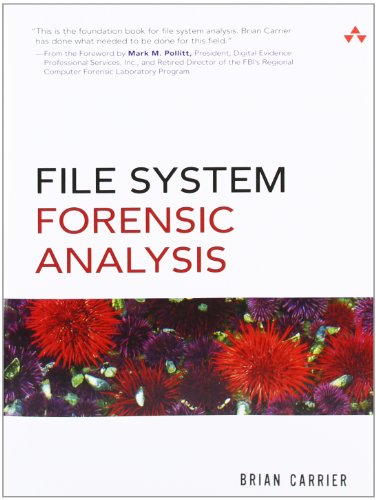File System Forensic Analysis pdf
Par moore laura le dimanche, mars 19 2017, 03:17 - Lien permanent
File System Forensic Analysis by Brian Carrier


File System Forensic Analysis Brian Carrier ebook
Format: chm
ISBN: 0321268172, 9780321268174
Page: 600
Publisher: Addison-Wesley Professional
Backup files are provided from the “custodian”. It provides more information about a file, such as file ownership, along with more control over files and folders. Finally, we will cover the emerging intersection of digital forensics and traditional security, specifically mobile app security and continuous forensic monitoring of key systems. File System: Forensic Analysis. Live Analysis: when you are use the OS or othe system resources being investigated to find evidence. I am not going to delve into the depths of the format of NTFS because it has already been explained in numerous books like File System Forensics by Brain Carrier. Chapter 1: Digital Crime Scene Investigation Process. For example, chapter 4 is dedicated to the HFS+ file system used by Macintosh computers and drills down to disk level file system forensics. IOS forensics - Physical, logical and file system extraction, decoding and user lock bypass. Digital Evidence and Computer Crime: Forensic Science, Computers and the Internet. I have recently seen a few listserv messages regarding determining when the Operating System was installed. The New Technology File System (NTFS) is a file system developed and introduced by Microsoft in 1995 with Windows NT. This post focuses on the two common sources of date/times that can be somewhat misleading. Get today's news and top headlines for forensics professionals - Sign up now! NTFS offers significant improvements over previous FAT file systems. Windows Restore Points themselves can be of forensic importance because they represent snapshots of a computer's Registry and system files. · Physical extraction from locked and unlocked Nokia BB5 devices.